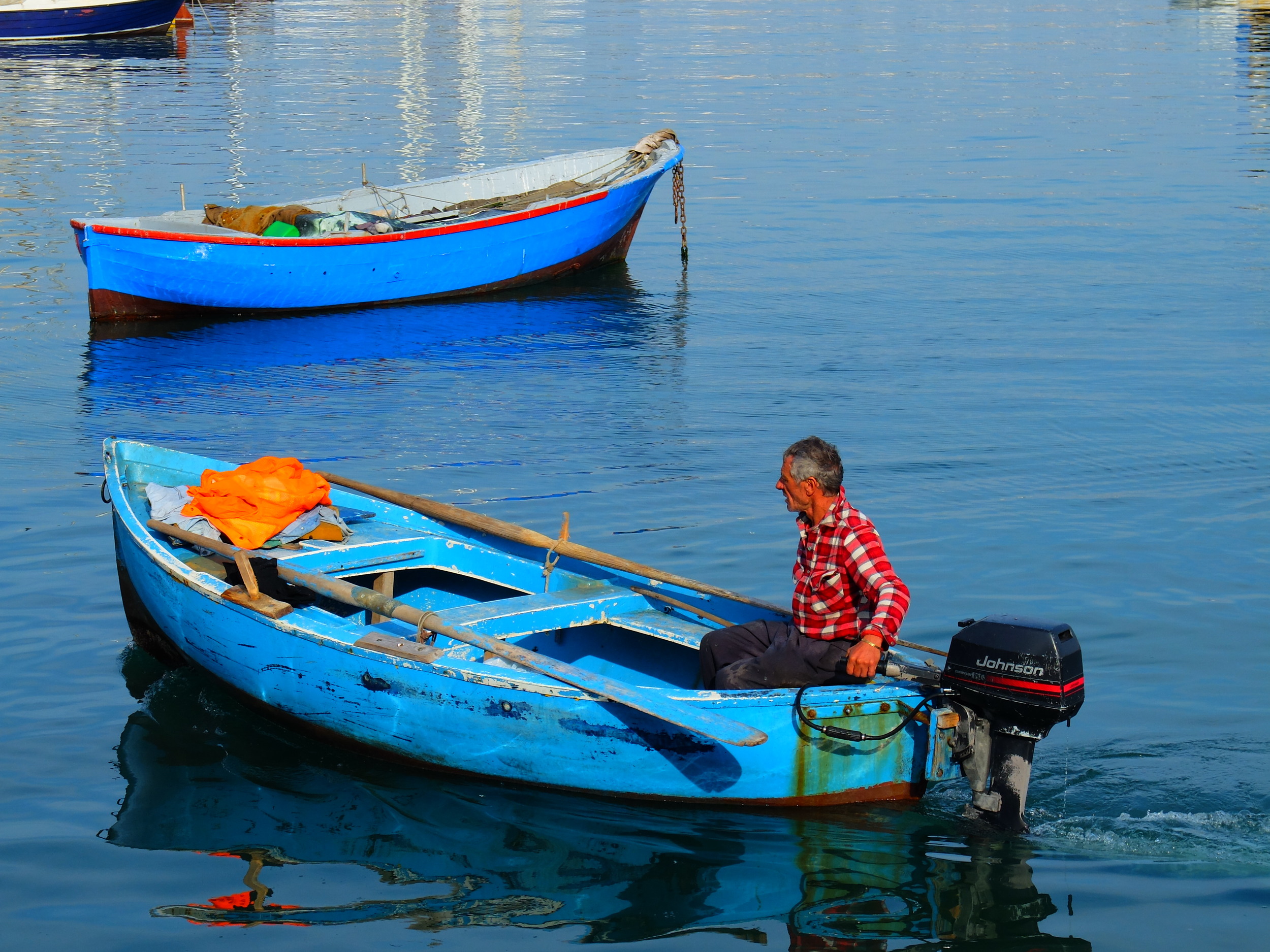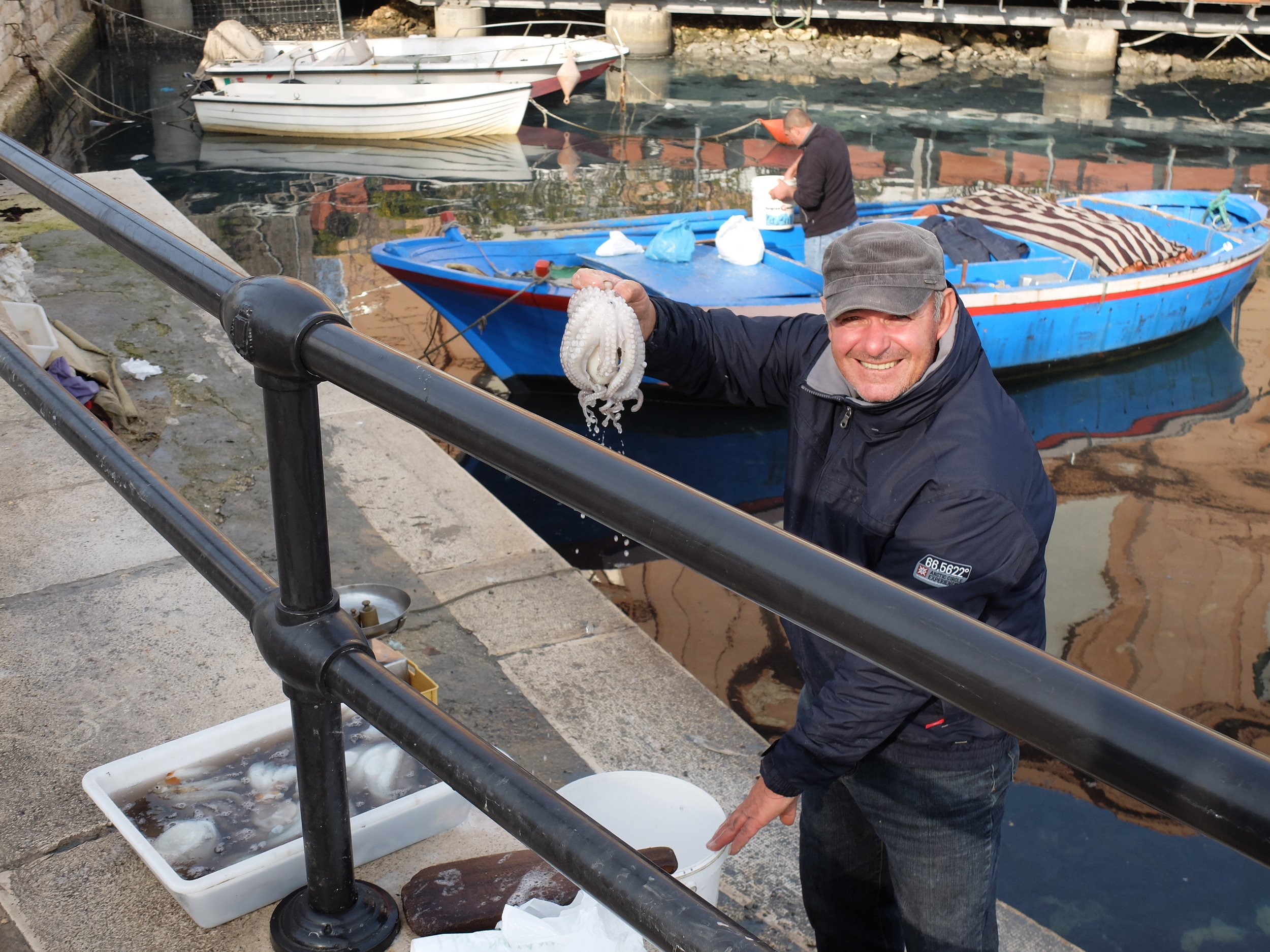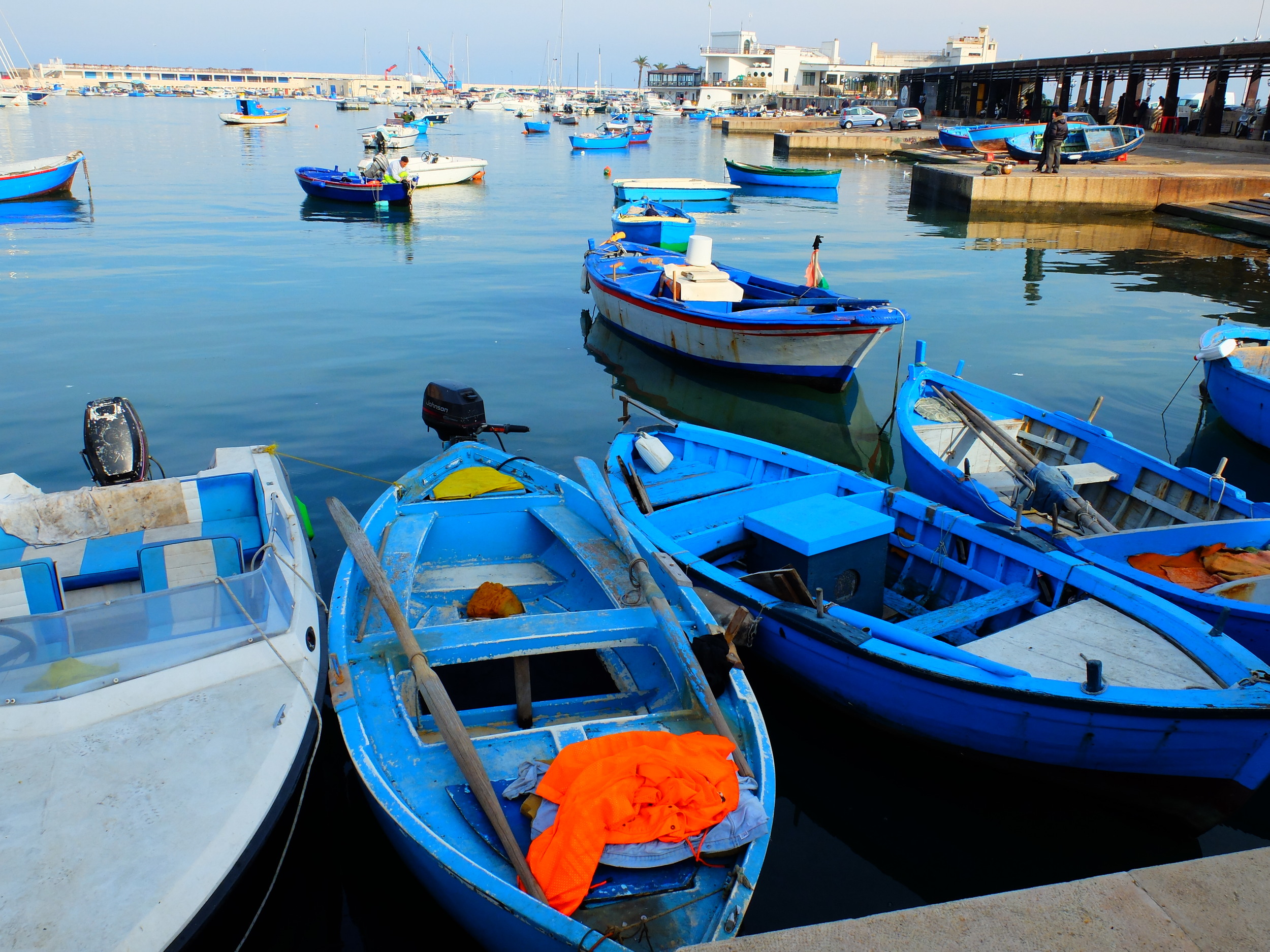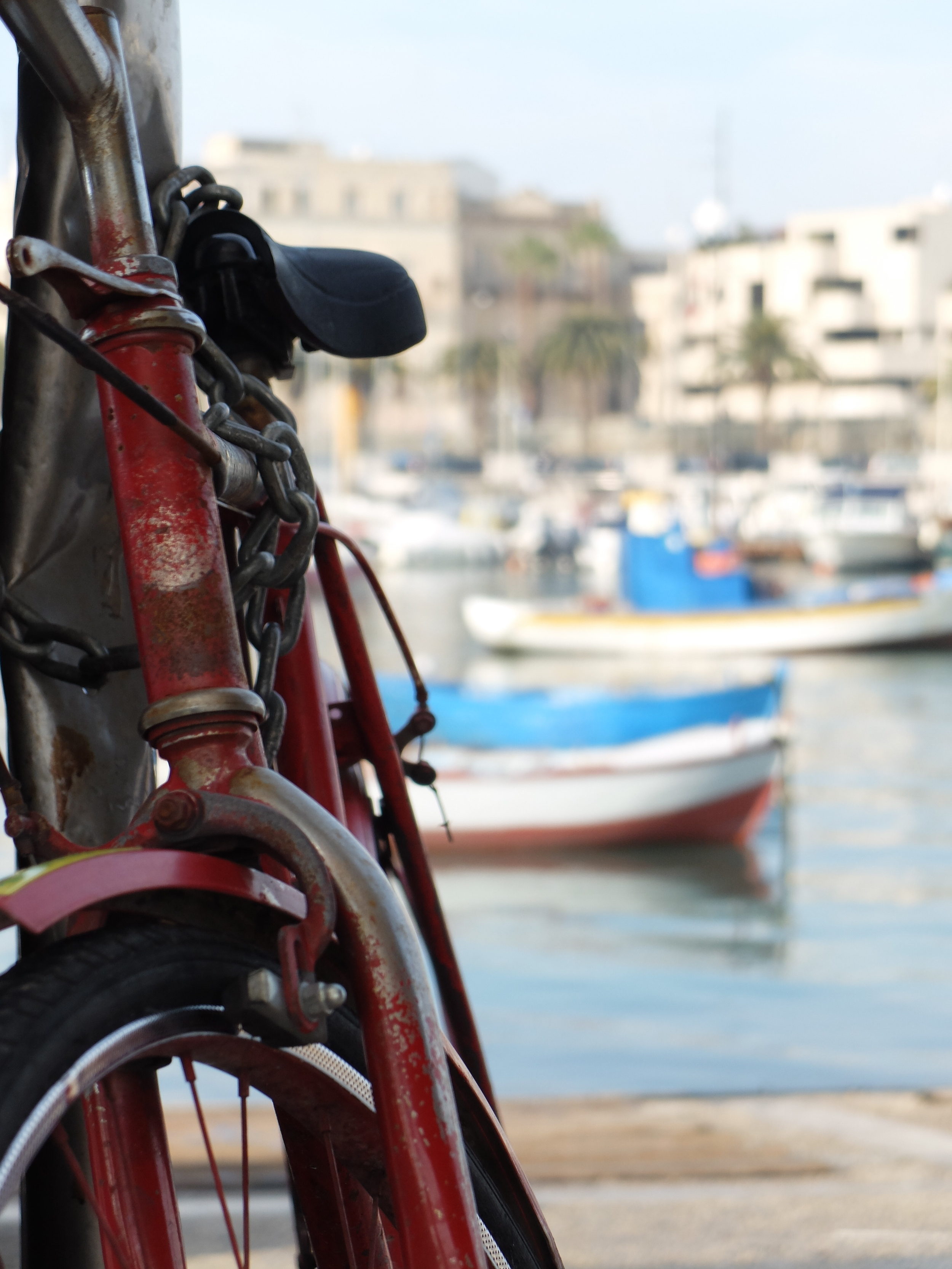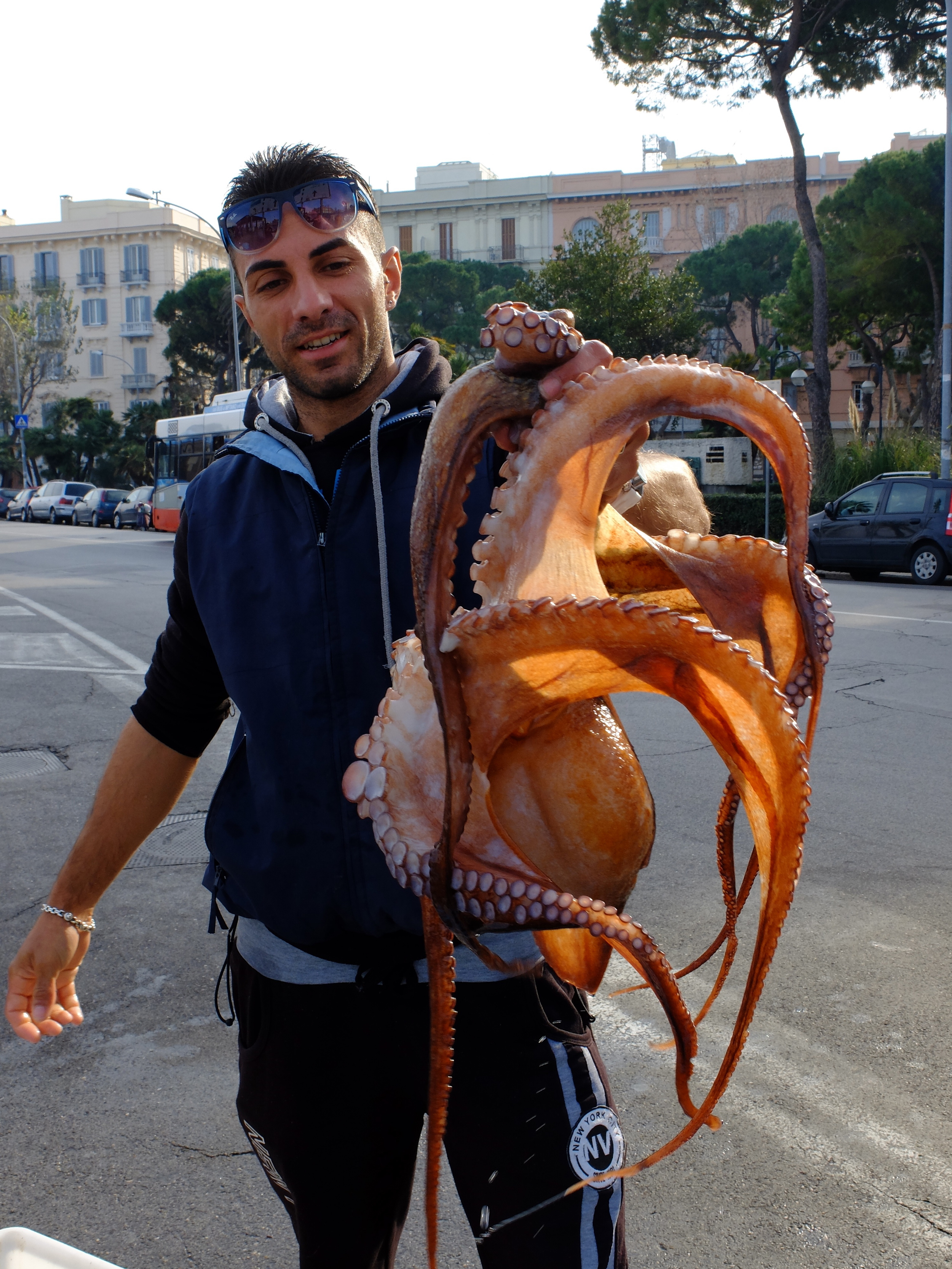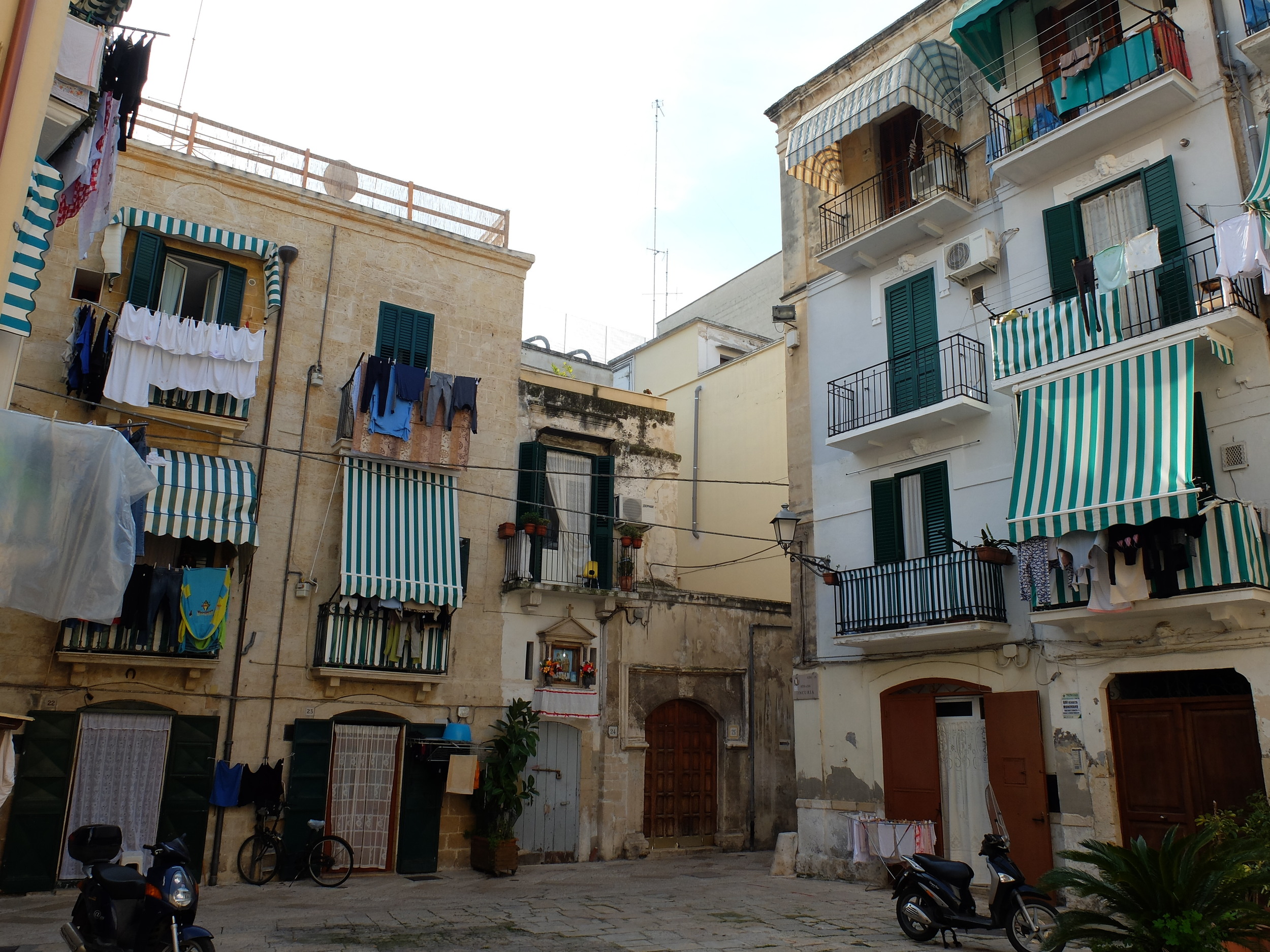Italian fisherman in Bari, Italy
A lot has been written about Italy; there is fashion, there is pasta, there are famous mountaineers, they make fabulous cars, the women are gorgeous, towns are literally named after food (or vice versa), there is the Vatican, and the Italian style of making coffee has prevailed over the world. Yes, Italy is awesome and we have heard all about that. I have been to Italy more times than I can count on one hand and it is special to me. I got engaged in Italy, one side of my family came over to the Americas on a boat from Italy, however, this last time I visited The Boot I felt like I actually found Italy.
After pitching across the Adriatic Sea through the night on a ship from Montenegro, Isaac and I arrived in Bari, Italy to the sun peeking up and illuminating the port with its early-morning sideways glance. We entered the city through the old town where we found a labyrinth of skinny marbled streets, laundry blowing in the wind, churches peppered throughout, and a sleepy city just beginning to rise.
Fisherman Lockers, Old Port, Bari, Italy
Bari, a city located on the Adriatic Sea at the top of the heel of the boot in South Italy, is the epitome of what it looks like when antiquity meets modernity. Rome and Venice rule the history books, and Milan has undoubtedly made a name for itself as a modern city, but Bari possesses a gritty undertone that carries with it an authenticity. The Old Town is preserved just enough to remain functional to live in, and the New Town, while prospering, is not the thriving, wealthy industry of the North.
The Old Town has remained intact for the families that have occupied it for centuries. It has not been bought out to be made into bohemian hostels, and every crippled building is lived in and well loved. That being said, it is nearly impossible to find a hostel in the Old Town, there is one, and a handful of rooms that families will rent out, but most visitors are forced to stay in the New Town. We stayed with Victor, an eccentric young Italian kid that we met in a bike shop through a guy we met on couchsurfing. Although we were nine years his senior, he was extremely welcoming, from offering us his spare bedspring (it was a metal bed frame with nothing but springs in an apartment that he hadn’t paid rent on for three months) to taking us out with him and his friends to experience the subculture of Bari nightlife. We ate his two favorite foods in Bari, ‘pan y mierda’ (bread and shit) from an Albanian food cart, and ‘camel’s toe’, a drippy mix between a hot pocket and an empanada, and yes, it looked like a camel’s toe—the kind that you don’t see on a camel.
Although Bari has a doubtful reputation—Victor had a map on his wall that depicted current Mafia ownership of all parts of the city—the confused streets of the old town are quaint and full of character. Women hand make orecchiette and leave it to dry on the streets outside their homes, old ladies religiously scrub the marble outside their doorstep because they use it as a living room since none of the apartments are big enough to incorporate a communal space, and fishermen land their wooden boats on the port and sell their catch on the waterfront before bringing the leftovers home for dinner. It is a city that has managed to incorporate their way of living for the past millennia into the fast-paced world we see today. It is a vulgar city, rough and unrefined, but it has escaped false distortions, exploitation by tourism, and Italian idealizations. It is only just nice enough, it is lived in and it is real. My Austrian friend once said, “all Italy has going for it is that there is a bunch of old shit”. I’ll have to tell her to visit Bari.




